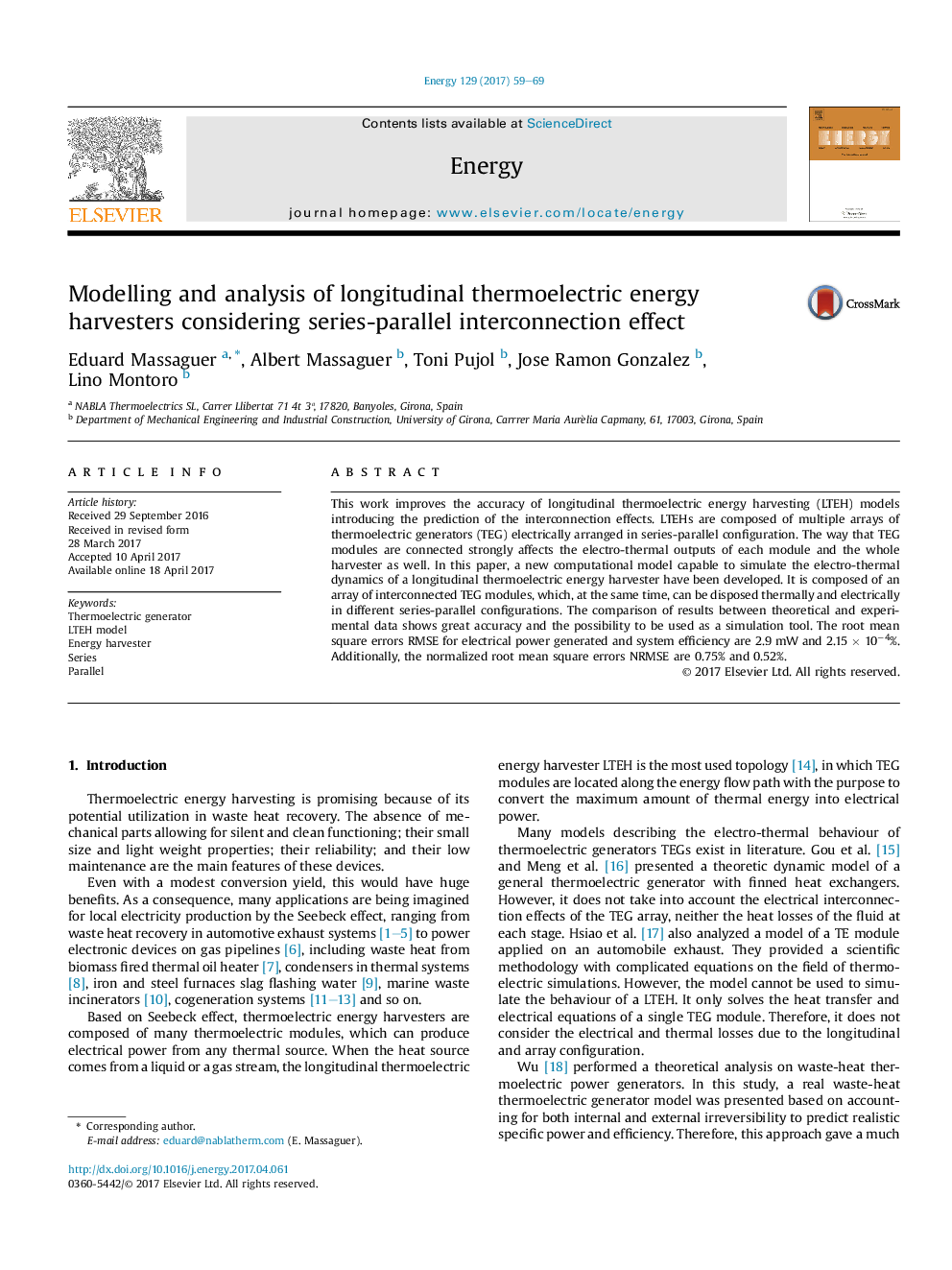| Article ID | Journal | Published Year | Pages | File Type |
|---|---|---|---|---|
| 5475911 | Energy | 2017 | 11 Pages |
Abstract
This work improves the accuracy of longitudinal thermoelectric energy harvesting (LTEH) models introducing the prediction of the interconnection effects. LTEHs are composed of multiple arrays of thermoelectric generators (TEG) electrically arranged in series-parallel configuration. The way that TEG modules are connected strongly affects the electro-thermal outputs of each module and the whole harvester as well. In this paper, a new computational model capable to simulate the electro-thermal dynamics of a longitudinal thermoelectric energy harvester have been developed. It is composed of an array of interconnected TEG modules, which, at the same time, can be disposed thermally and electrically in different series-parallel configurations. The comparison of results between theoretical and experimental data shows great accuracy and the possibility to be used as a simulation tool. The root mean square errors RMSE for electrical power generated and system efficiency are 2.9Â mW and 2.15Â ÃÂ 10â4%. Additionally, the normalized root mean square errors NRMSE are 0.75% and 0.52%.
Related Topics
Physical Sciences and Engineering
Energy
Energy (General)
Authors
Eduard Massaguer, Albert Massaguer, Toni Pujol, Jose Ramon Gonzalez, Lino Montoro,
